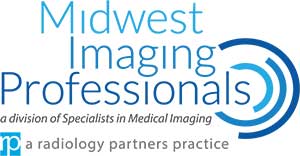
Our breast imaging centers offer screening and diagnostic imaging services, including 3D and 2D digital mammography, breast ultrasound, and MRI. We also provide screening whole breast ultrasound, as a supplemental screening modality to mammography, in patients with dense breast tissue, which can obscure findings on mammography.
We offer the full spectrum of procedures related to breast pathology, including ultrasound-guided, stereotactic-guided, and MRI-guided biopsies.
In collaboration with health specialists in breast cancer, our dedicated team offers the most up-to-date screening and treatment guidelines tailored to each patient. The services include: pre-operative image-guided localization procedures to appropriately guide the surgeon to the tumor’s precise location; using imaging, including MRI, in patients with breast cancer to monitor response to therapy; and implementing appropriate screening algorithms for patients at average, intermediate, and high risk for developing breast cancer depending on their personal/family history or genetic predisposition to cancer.
We offer state-of-the-art imaging equipment for screening, diagnosis, and intervention:
- Digital mammography units with 3D tomosynthesis imaging capability
- Stereotactic and tomosynthesis machines with biopsy capability in prone and upright positions
- State-of-the-art ultrasound units for screening, diagnosis, and biopsy guidance
- 3.0 Tesla MRI magnets with dedicated breast coils for screening, diagnosis, and intervention
Who is a radiologist?
A radiologist is a highly trained and specialized physician that analyzes a mammogram. The physician also performs procedures and monitors changes to your images over time. A report is created and sent to the physician who referred you to receive a mammogram.
What is mammography?
A mammogram is a medical imaging study that uses a low-dose x-ray to create an image (in a 2-dimensional format or 2-D) and see inside the breasts.
What is screening mammography?
Screening mammography is a mammogram that is used to show changes in your breasts over time. A mammogram is critical to early breast cancer detection because you can’t always feel subtle changes in your breasts.
The American College of Radiology (ACR) and the National Comprehensive Cancer Network (NCCN) recommend screening mammography every year for women, beginning at age 40.
What is diagnostic mammography?
Approximately 10% of women who receive a mammogram have abnormal findings, such as lumps or nipple discharge.
Once an abnormal finding is evaluated in the mammogram, diagnostic mammography is used to assess the area of concern. Keep in mind, most diagnostic mammograms are normal.
Will a mammogram always detect my cancer early?
Today’s best screening tool for breast cancer is a mammogram; however, it does not detect all breast cancers.
It is essential to receive annual mammograms so minor changes are observed and noted by your radiologist.
What are dense breasts?
Dense breasts have more ducts, glands, fibrous tissue, and less fat, making it more challenging to detect breast cancers.
What is breast tomosynthesis?
It is a computer reconstruction of the breast images into a 3-dimensional (3-D) format for women with dense breasts.
Breast tomosynthesis is also called 3-D mammography or digital breast tomosynthesis (DBT).
Does breast tomosynthesis capture all breast cancers?
3-D mammography overcomes some of the limitations of 2-D mammography, but it does not detect all cancers.
How do I know if I have dense breasts?
A radiologist will determine if you have dense breasts and report it to your doctor. The state of Illinois requires your doctor to notify you if you have dense breasts. Not all states are required to do so.
What is breast ultrasound?
It is a supplemental screening tool for women with dense breasts, who are at high risk for breast cancer, and who are pregnant.
Ultrasound does not use x-ray technology; instead, it uses sound waves to create an image.
What is breast MRI?
Breast MRI is another supplemental screening tool for women more sensitive than ultrasound in illustrating breast cancer; however, it should not replace mammograms (2-D or 3-D) or ultrasound.
Breast MRI is commonly used for women at high risk for breast cancer, understanding the extent of cancer after diagnosis, evaluating abnormalities that are difficult to assess on mammograms, evaluating breast implants, and other uses.
It uses a powerful magnetic field, radio waves, and a computer to create comprehensive images of the structures within the breast.
What is a breast biopsy?
As with any breast screening exams, if abnormalities are found, your doctor might order a biopsy. The biopsy will collect a small sample of the breast tissue and send it to a pathologist, a physician who studies body fluids and tissues.
What are the types of breast biopsies?
The type of breast biopsy depends on many factors such as location, how big it is, multiple areas, etc. All biopsies leave little to no scarring and are less invasive than surgical biopsies, NOT listed below.
- Fine-needle aspiration biopsy (FNA): A very thin, hollow needle (typically thinner than ones used in a blood draw) extracts tissue from the suspicious area.
- Ultrasound-guided core needle biopsy: A core needle (CN) is directed into the area of interest using ultrasound to remove small cylinders or cores. The process is much faster than stereotactic biopsies.
- Stereotactic biopsy: Uses x-ray to locate the breast abnormality and places a needle to remove tissue along with a vacuum-assisted device (VAD) to collect multiple samples with one insertion.
- MRI-guided biopsy: Utilizes MRI to guide the needle for a tissue sample and could use any of the above methods to extract the tissue, such as FNA, CN, or VAD, as well as wire localization, which is a guidewire placed in the area of interest to assist the surgeon for a surgical biopsy.
THE SERVICES LISTED ON THIS WEBSITE ARE FOR GENERAL INFORMATION PURPOSES ONLY AND DO NOT INCLUDE ALL SERVICES OF MIDWEST IMAGING PROFESSIONALS. WHILE WE STRIVE TO KEEP THE INFORMATION UP TO DATE AND CORRECT, WE MAKE NO REPRESENTATIONS OR WARRANTIES OF ANY KIND, EXPRESS OR IMPLIED, ABOUT THE CONTENT, COMPLETENESS, ACCURACY, RELIABILITY, LEGALITY, SUITABILITY OR AVAILABILITY, WITH RESPECT TO THE SERVICES CONTAINED ON THIS WEBSITE.

